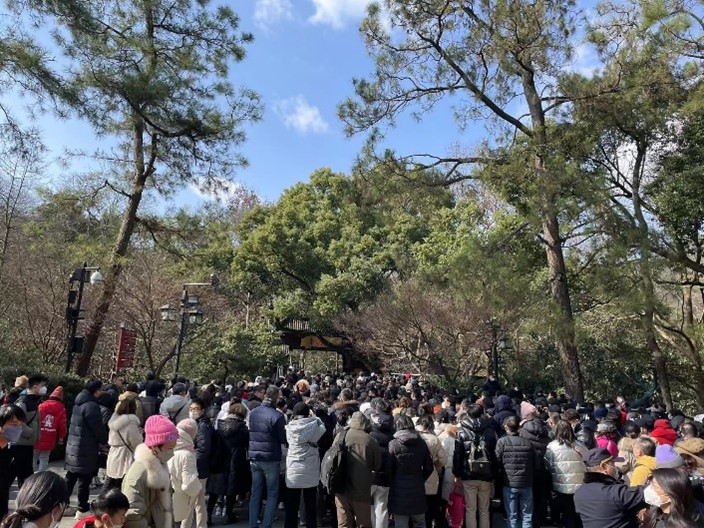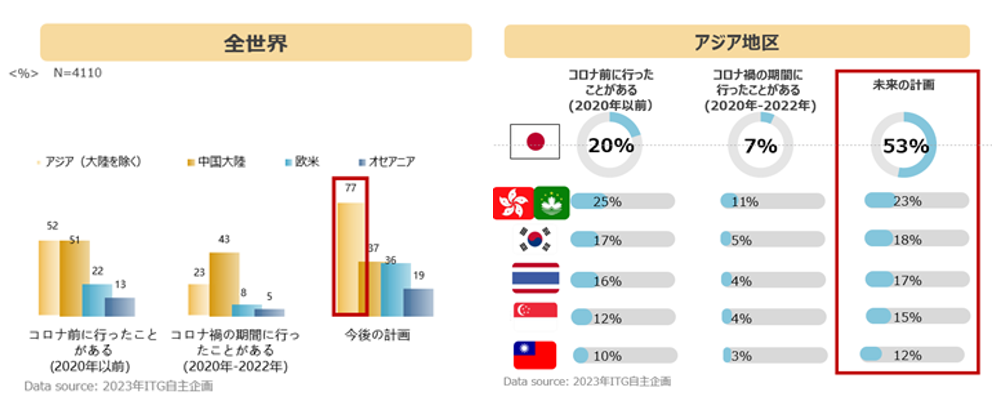<From Overseas Office> [ China ] Relaxation of CV19 Regulations! Domestic and international traffic to be revived

Three years have passed since the new coronavirus outbreak at the end of 2019. Although China has continued to maintain strict covid regulations, 2022 was a year of major changes in the living environment as the country went from a large-scale lockdown to deregulation at the end of the year.
In this column, I’d like to talk about future traveling to Japan based on the situation during the Chinese New Year immediately after deregulation and the results of a self-planned survey on overseas travel.
Strict covid regulations ended. Freedom of movement within China has resumed!
The Shanghai-wide lockdown that began at the end of March 2022 is still fresh in our minds, but even after the lockdown ended, people still had to present Health QR code to prove their negativity in order to enter any transportation or commercial facilities, and these health codes functioned on a regional basis. Therefore, it was still not easy to move across provinces.
Although I had the desire to visit various areas since I was in China, this inconvenience refrained myself from traveling outside Shanghai. My son's kindergarten requested not to also.
In mid-December, the Shanghai government finally eliminated the need to present a health code except for some facilities such as medical institutions, and I was able to travel to and from various areas in China without presenting any health code, including travel across provincial boundaries before the Chinese New Year in 2023. I was able to travel to Suzhou and Wuxi on weekends and Hangzhou during Chinese New Year. However, during the Chinese New Year, Hangzhou was very crowded with tourists, and the popular Lingyin Temple was too crowded to enter.

Entrance to Ling Yin Temple in Hangzhou, where I traveled during Chinese New Year.
What is Chinese New Year?
In Japan, New Year's Day is January 1st on the calendar (Western calendar), and people think of going home to their parents' houses and gathering with their families and relatives, but in China, rather than January 1st on the Western calendar, Chinese New Year is the biggest event. It was January 22nd for 2023 and the long break including the date. The streets and buildings are decorated in red, as the color of celebration, and the entire city was full of festive mood. As shown in the photo below (2), companies that have stores in their premises also change their store decorations from the usual to respond to the Chinese New Year sales season.

Photo 1: Entrance on the first floor of my apartment

Photo 2: Decoration of Shanghai M&M flagship store
The Chinese New Year is the most popular time of the year for Chinese people to travel to their parents' homes and for domestic and international travel, but how did the situation fare during the Chinese New Year in 2023, when the covid restrictions were relaxed? According to the Ministry of Culture and Tourism, the number of domestic travelers during the Chinese New Year vacation period in 2023 was 308 million, recovering to 88.6% of the 2019 level. On the other hand, domestic travel revenue during the Chinese New Year vacation was only 375.8 billion yuan, 73.1% of the same period in 2019 (513.9 billion yuan), indicating that even travel and consumer confidence during travel have not recovered to pre-pandemic levels. One of the reasons for this is that travel in relatively short distances was popular during the Chinese New Year. It is possible that the last-minute deregulation of covid made it difficult to plan large-scale long-distance trips, but it is also possible that the covid disaster has increased the importance of consumption in areas closer to daily life than before and making people more cautious about spending money on their non-daily necessities.
Willingness to travel to Asia
So how is the willingness to travel to Asia? According to a self-designed survey conducted by Intage China (4,110 men and women with monthly household incomes of 8,000 yuan or more), 77% of respondents are planning to travel to Asia in the future, indicating that Asia is becoming a popular destination due to its proximity and high-cost performance in terms of consumer spending. Furthermore, approximately 53% of respondents are planning to travel to Japan in the future. The popularity of Japan remains outstanding in Asia, and the results indicate that a return trip to Japan in the future can be expected.

While the results of our self-initiated survey indicate that the reaction to covid has led to return visits to Japan, it is questionable whether the Chinese consumers who have visited Japan have been able to increase their willingness to spend in the country. Prior to covid pandemic, consumption in Japan was driven by word of mouth from acquaintances and friends who had visited Japan, and by C-to-C communication through social networking platforms such as Redbook. However, since it has been difficult to visit Japan in the past three years, the latest information from visitors to Japan has naturally stopped. When Chinese members from Intage China had business trip to Japan in March, they were willing to purchase items in Japan since it has been a long time from their last visit, but when they entered department stores and such, they could not figure out what to buy and gave up on the purchase.
As consumption has shifted to improve daily life after covid, and Chinese brands continue to grow in both quality and popularity, it is very important to carefully provide "local" information that is easy and attractive for Chinese consumers on their next trips to choose from.
-

Author profile
Kenichi Tamaki
Joined Intage in 2006.
Moved westward little by little from Tokyo to Osaka to Shanghai, China.
Since joining the company, he has been engaged in research work mainly on consumer goods. Editor's Profile -

Editor profile
Chew Fong-Tat
- Apr 12, 2023
- 1483 Views
 Global Market Surfer
Global Market Surfer CLP
CLP